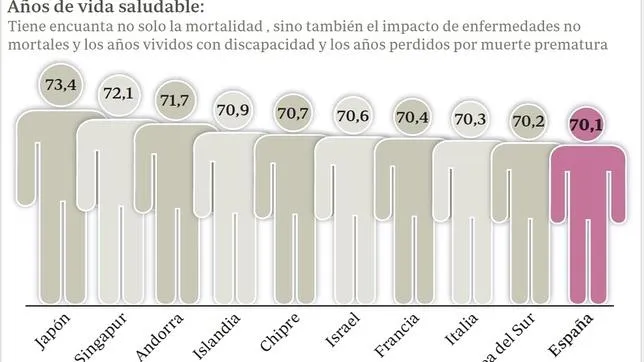A work of six researchers from the Department of Clinical Medicine of the Miguel Hernández University (UMH) of Elche concludes that the diabetes mellitus mortality rates have dropped significantly (up to 41 %) in almost all of Spain in the last 15 years.
This has meant to erase the traditional difference between the regions of the north and those of the South, with the exception of the two provinces of the Canary Islands, where they continue to rise.
The work, published in the latest issue of the "Spanish Magazine of Cardiology", reviews how the Diabetes Mellitus mortality rates have evolved from 1998 to 2013, a disease that in Spain kills between 9,000 and 10,000 people a year and constitutes theThird cause of death between women and seventh among men.
The study uses the data provided by the National Institute of Statistics on Population and Deaths in four waves (1998, 2003, 2008 and 2013), based on a situation proven by several previous studies: in southern Spain more people dies from diabetes andits complications that in the north.
The work, led by Domingo Orozco-Beltrán, reveals that in those 15 years diabetes mortality has descended very importantly throughout Spain, 41 percent average among women and 25 among men, except in Las Palmasand Santa Cruz de Tenerife, where it has grown, and Ceuta and Melilla, who improve little.In that period, the evolution of the Diabetes Mellitus mortality rate in Spain has been this: 30.4 deaths per 100,000 inhabitants in 1998, 29.4 in 2003, 27.2 in 2008 and 22.7 in 2013.
On the other hand, in the province of Las Palmas the associated deaths that disease has been growing constantly since then, from a rate 62.6 percent in 1998 to another from 86.5 in 2013 (at both times, the mosthigh from all over the country).
The same evolution is observed in Santa Cruz de Tenerife, province that jumps from a rate of 55.2 deaths per 100,000 inhabitants in 1998 to another from 68.3 in 2013 (the second in Spain).As for Ceuta and Melilla, their figures started from 63.2 deaths per 100,000 inhabitants in 1998, they fell halfway in 2008 (31.0) and recovered almost the same level in 2013 (58.8).At the contrary end of the table are, according to the 2013 data, Cantabria, with a mortality of 6.1 per 100,000;La Coruña, with 9.6;Orense and Madrid, with 10.1;and Pontevedra, with 10.8.
The study shows that it is in 2008 when the border begins to be erased that previous works had been drawing between North Spain and South Spain and that change is consolidated in 2013. "That unequal north-south cast disappears (throughout the15 years studied) due to a notable reduction in mortality from diabetes mellitus throughout the national territory, but especially in areas with greater previous mortality, and lower territorial inequality is observed, "the authors of the article write.
The work recognizes that, for years, the decrease in mortality from this disease has been associated to the decrease in the number of patients who suffer from it, but it emphasizes that, from 2008, that is not so: the prevalence of diabetes isIt maintains, even rises, but mortality associated with it falls into almost all provinces.
"This fact would reinforce the hypothesis that the advances produced in primary, secondary and tertiary prevention and the new drugs available in those years are equalizing mortality among patients with and without diabetes mellitus," the authors indicate.
They also find that, from 1998 to 2005, in Spain the mortality from ischemic heart disease was reduced by 40 percent, "fundamentally due to better control of risk factors, especially cholesterol (30 %) and hypertension (15 %), something that they believe has also influenced diabetic patients.They also underline that the improvement presented by the figures of almost all of Spain "coincides over time with the appearance of the diabetes strategy of the National Health System", which was adopted in 2006 and reviewed and currently in 2012.
As for what happens in the Canary Islands, Ceuta and Melilla, the authors of this work believe it is necessary to seek "new factors" that influence their diabetes mortality rates.
"Among these determinants, the socioeconomic status or the educational level of parents and even genetic or environmental has been proposed at the academic level, although obviously there may also be differences in the different population strategies implemented by each autonomous community," they add.


